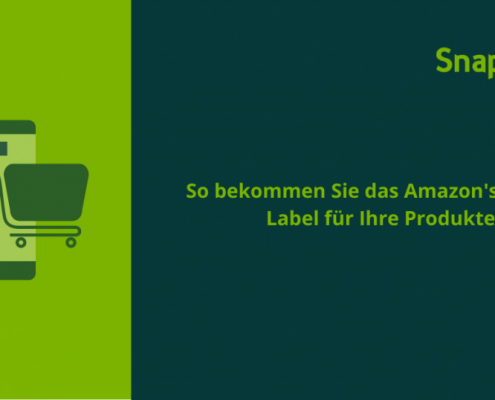Price calculation for online shops: How to determine your prices correctly

The price of a product often decides whether a particular retailer is even considered when shopping online or not. However, the balancing act between a competitive price and an attractive margin is often a difficult undertaking. In this blog post, we will show you which factors you should definitely take into account when calculating the price for your online shop and give you a practical calculation example.
Importance of pricing: No room for calculation errors
Before we get into the price calculation for your online shop, we would like to say a few words about its importance. In many cases, the price determines nothing less than the success of the company and therefore offers no scope for miscalculations. If you set your price too high, you may be undercut by the competition and get little or no sales. If your calculation is too low, selling your products can be a losing proposition, even if you can generate a large volume of sales. For this reason, you should consider all factors relevant to your pricing and include your margin in the calculation.
Preliminary consideration: What are your customers willing to pay?
Even before you carry out a detailed factor calculation, it makes sense to think about the willingness of your potential customers to buy and to find out about it. This will give you a first sense of what price you would need to achieve for a profitable business. At the same time, you receive a counter-example for your later calculation and can better estimate how you can classify it. For example, if your calculated unit price is $80, but the market is selling for $85 each, that means you have some wiggle room and you might be able to set your margin a bit higher.
In order to determine the willingness to pay, you could hire a market research institute that uses customer surveys and market data to determine the willingness to pay, but this would involve an investment. Alternatively, you could conduct the survey yourself or take a look at the competition. It can be assumed that your competitors are viable and sell at a reasonable price, as a result competitors can very often reflect a representative picture of the general willingness to buy.
Factors in pricing for online shops
Operating an online shop has some special features in terms of pricing compared to local sales. For example, if the web shop is your only point of sale, you save on renting a local shop and do not have to add this to your product price, which means that your products can be sold cheaper and/or your margin can be higher. In return, however, there are costs for hosting, data protection measures or extensions to your shop system.
In essence, however, the calculation formulas for price calculations for online shops and local shops hardly differ from each other, since these factors are usually interchangeable. The following calculation could therefore also be modified for local sales.
unit costs
The direct costs are the items that are directly attributable to the product. It’s usually the cost of materials that goes directly into the product. If you sell muesli, for example, then the costs for the ingredients are part of the so-called direct material costs.
Let’s assume that you still have to put together and pack the right mixture for the muesli. So-called direct production costs are incurred in this process.
Typical individual costs are:
- Material unit costs (MEK)
- Manufacturing direct costs (FEK)
overhead
In addition to the direct costs, overhead costs also flow into the product. These are the factors that cannot be directly attributed to a single product. Personnel costs (material overheads) or the rent for your production facility (manufacturing overheads) are classic overheads that you can only add to the product price proportionately. Overhead costs are therefore calculated as a percentage of the direct costs.
Note: The exact percentages are determined as part of cost center accounting . To explain them here, however, would go beyond the scope. Therefore, we assume the overhead rates in our sample calculation below as given.
In addition to the overhead costs for material and production, there are also the overhead costs for administration and sales. These include, for example, the costs of marketing measures. With regard to the price calculation of an online shop, this could include the costs for Google Shopping Ads. The hosting of your web shop mentioned above would also count, since the online shop is your sales channel.
Typical overheads are:
- Material overhead (MGK)
- Manufacturing overhead (FGK)
- Overhead costs for administration & sales (GK Vw & Vt)
cost price
With the individual and overhead costs, the prime costs can be determined. This is an important intermediate result in the price calculation. For your business to be profitable, you must always sell above cost. Conversely, the cost price is the absolute minimum price at which you can sell. Otherwise your business will not break even and you will make a loss.
Reading tip: You can find out how to be successful with your own online shop in this blog post .
profit margin
As mentioned elsewhere, your own margin should also appear in the price calculation for your online shop. This is also a percentage value.
rebates and discounts
Especially on Black Friday or in the Christmas business, we find again and again that dealers fight a real discount battle. The price of individual products sometimes falls by 25, 30 or even 50 percent. So that you know whether you can afford such a discount at all, you should include it in your price calculation. It is sometimes surprising for laypeople that the discount is added to the calculation. This means that you already create scope for a later discount during the calculation, which you may not even give when you enter the market. This is the only way you can be sure that you will still achieve your desired margin even with discounted prices.
Discounts may have less importance for the price calculation in online shops, unless you also sell with your shop in the B2B area. Let’s say, for example, that you also sell your muesli to large customers. You would then issue a cash discount if the customer meets his payment obligation very quickly. Discounts are also added as a percentage in the price calculation.
Calculation example: Price calculation for a pack of muesli
Now that we have explained the cost factors, let’s do a sample calculation for our muesli.
Note: In order to be able to calculate as precisely as possible, we have rounded up to the third digit after the decimal point. The actual list price that ultimately appears in your shop would of course have to be rounded up to two decimal places.
| Material direct costs | €0.52 |
| + Material overhead (10%) | €0.052 |
| = material costs (MK) | 0,572 |
| + Manufacturing unit costs | €0.48 |
| + Manufacturing overhead (15%) | €0.072 |
| = production costs (FK) | €0.552 |
| = manufacturing costs (MK + FK) | 1,124€ |
| + Overheads for administration & sales (12%) | €0.135 |
| = cost price | €1,259 |
| + profit margin (15%) | €0.1889 |
| = cash sale price | 1,448€ |
| + discount (3%) | €0.043 |
| = target selling price | 1,491€ |
| + Discount (20%) | €0.298 |
| = list selling price | €1,789 |
Following our example, you could offer your muesli for €1.79 in your shop and achieve your desired margin of at least 15 percent until you reach a price of €1.45. If you sell for less than €1.26, your product does not break even and you make a loss.
Pricing is a process
We hope that the example above gave you good ideas for your own price calculation. However, it is not enough to determine the price only once before a new product is launched, because pricing is a process. If your individual and/or overhead costs change for any reason, a recalculation may become necessary.
In addition, the price is largely determined by the competition, which is particularly true in e-commerce, where retailers are exposed to high competitive pressure due to low market entry barriers.
Receive automatic price suggestions and calculate your prices with ShopSPY
ShopSPY lets you keep an eye on your competition. You determine which e-commerce platforms you want to monitor and ShopSPY will suggest price adjustments for your own products based on comparative data. In addition, the tool offers you the option of carrying out an automatic price range calculation based on previously stored variables such as delivery costs, other costs, margin and others.










